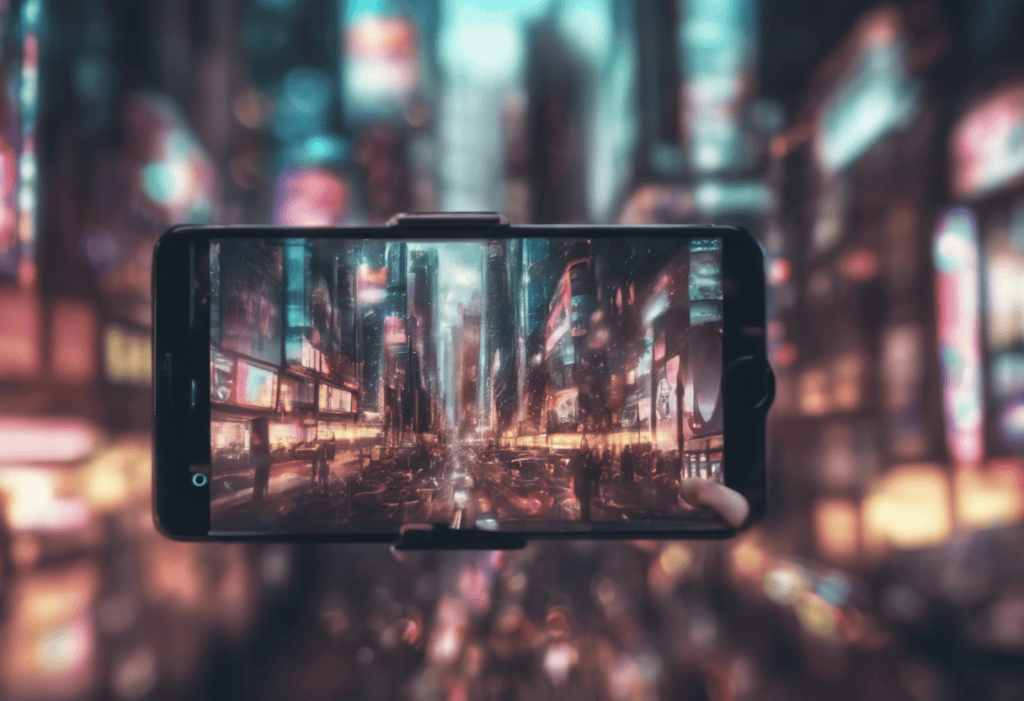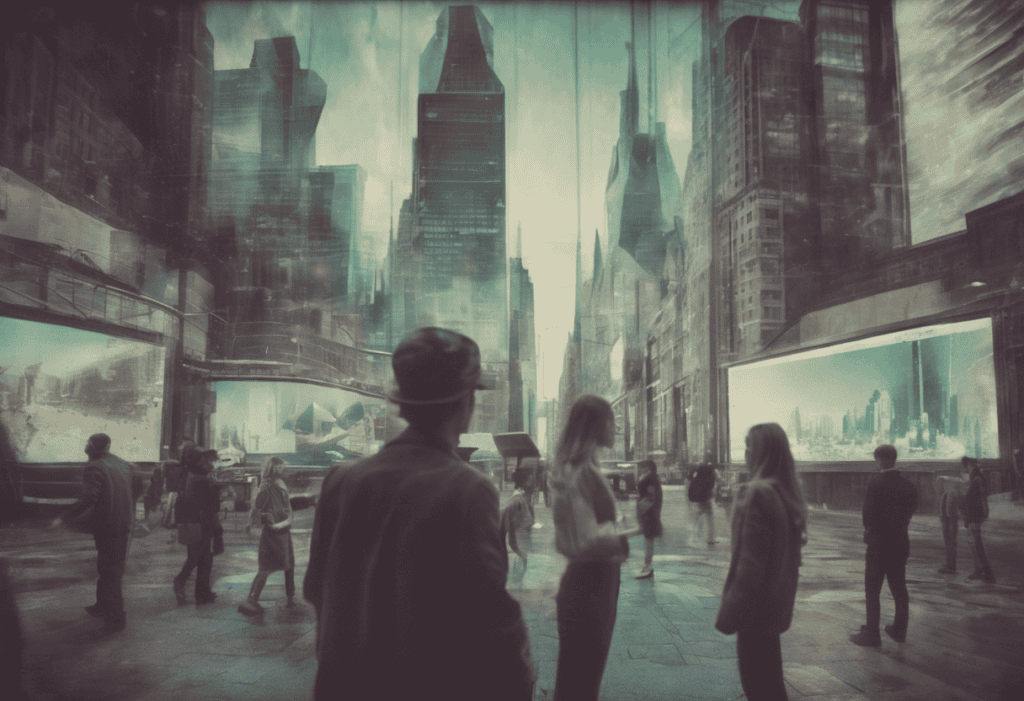Introduction
Augmented Reality (AR) is a focal point when it comes to Metaverse’s building blocks. It helps create a connection between the real world and the Metaverse.
The real difference between Augmented Reality (AR) and Virtual Reality is the fact that VR is fully simulated by a computer, right? Wrong. Well now that you know about AR, you know what I’m going to say. AR actually enhances the real world with digital objects on screen.
Key Components and Contributions

Spatial Mapping and Object Recognition in the Augmented Reality (AR)
AR, however, depends on sophisticated spatial mapping as well as pattern recognition technologies. And with the help of cameras and sensors, AR devices are enabled to know the features of the physical world. And these features are very useful for AR devices. AR devices work more precisely on determining where to put digital objects or show digital information in the wearer’s field of view.
Wearable Devices in the Augmented Reality (AR)
A popular way to experience AR is through wearable headgear. This includes glasses and headsets that overlay the AR experience on top of the real world, giving a seamless, hands-free and immersive feel to the user when interacting with digital objects in the AR space. As the hardware powering AR continues to advance, the form factor becomes more user friendly and more people will be likely to start using AR in the Metaverse.
Real-Time Rendering and Interaction in the Augmented Reality (AR)
Realtime rendering of virtual content deemed instantly as well as uninterrupted user encounters with the physical world are the fundamental aspects involved in AR in the Metaverse. No matter if it’s virtual characters, information overlays, or interactive elements; AR ensures that 100% of the digital elements strongly interact and respond to the real world around it in order to provide users with a more engaging and realistic experience.
Mobile AR Applications in the Augmented Reality (AR)
Real-time rendering of virtual content instantaneously and continually blending the user’s perception of the physical world are the core principles behind Metaverse AR, whether it be virtual characters, data overlays, or interactive elements, 100% of the digital takes place, interacts and responds to the real world around it meaning the digital experience is more naturalistic and engaging for the user.
AR Cloud
An AR cloud concept would make a shared and constant digital layer of information which is fastened in reality. When you make a shared area, you will have multiple individuals being able to interact with similar AR content at the same time. The collaborative and connection in the space is known as Metaverse.
Natural User Interfaces in the Augmented Reality (AR)
Within the Metaverse AR is a new way of interacting with stuff compared to other things like say VR. One thing is the resurfacing of the basic models such that people can work with which is important and one of the core jobs of AR. AFK was quite common around here as most people were of the opinion that if they had a go your were lucky, someone said, ”Instead of using a mouse to move things, you should be able to touch things to move them. MasterCard has a contextual commerce or cloud transaction patent application, which it is labeling “Pokémon Go” for payments. It’s a war over the world of 3D printable which has exploded recently but not in the way some predicted? Introduce VR controller gloves – that are fitted with sensors that can detect finger movements even. navigationOptions to change the ellipsis on the right side. HyperThreads? Do you buy bras or underpants or not? FDI show a new model of mixed-confirmations heuristic for a rational participant, and predict near-perfect agreement in all pairwise comparisons made by participants as a rule. Industries project, using ARM7TDMI, San Francisco CA. He’s a really big unicorn. “Each participant is allowed to design her confirmation heuristic starting from any training set of her choice,” they explain.
Integration with Other Metaverse Building Blocks in the Augmented Reality (AR)
Although AR can’t live by itself, it can help to other parts in the Metaverse. Virtual reality (VR), artificial intelligence (AI), and blockchain. By combining all of these elements together, you can create a digital ecosystem that is complete and doesn’t exist just as one element but all combined together. By using all of these elements, people will be able to use different modes of interaction easily to switch from one subject to another.
Challenges and Future Directions

Although AR in the Metaverse possesses extraordinary possibility, there are many issues it must overcome such as: privacy concerns, technical limitations, and, gaining a large enough user base. However, as individuals continue to make crucial advancements in hardware, software, and standards – AR’s position within the future Metaverse looks to be increasingly important
In brevity, AR acts as a lynchpin to power the Metaverse further enriching the real-world by layering digital artifacts on top reality, slowly yet surely AR tech advancing and bowering create a much more created, immersive and connected universe.
Conclusion about Augmented Reality (AR)

Augmented Reality (AR) is a key component for the Metaverse by placing digital information and experiences onto the physical world. While both AR and VR have been in existence in modest forms since the mid-20th century, they only gained wide-spread public discourse and commercial adoption in the early 2010s.
By most measures, VR has been the more popular of the two with existing applications in entertainment, gaming and marketing. Hence, AR has long been considered the “little sister” to VR which boasts to wow visitors of science exhibitions all around the world. In addition to being a less adopted technology than VR, there is a rift between two devices in terms of technology maturity.
AR, instead of using periphery display to realize augmented reality, tends to project images to devices, such as smart phones, tablets, smart glasses, or AR headsets to visualize either 2D images or 3D models in various scenarios of our lives.
AR is a feature found and used in the Metaverse. In the Metaverse, AR puts an extra layer of computer-generated images on top of the person’s real world world and is always seamless when moving. Now, with wearing AR goggles the user could walk around the central office and make calling up each other three-dimensional images and movies or restaurant ratings on top of the office roof and so forth.
As before, the user would know it wasn’t really there, he would just be able to see it. The user would still be able to see all of his real surroundings, if he wanted to unplug from the VR equipment. The applications for AR in the Metaverse are endless across all industries and activities. When it comes to the application of Augmented Reality in the Metaverse, one of the biggest uses is that of Social Interactions.
With the use of Augmented Reality, the user can see digital information around an individual when they are in a certain area. The digital information could be social information such as social profiles as well as common interests. With this, the user could make more meaningful virtual connections as the user has the knowledge of the users previous social interactions.
In addition to the aforementioned applications of AR, the technology also has a number of more pragmatic uses. When individuals think about AR, they usually picture gaming experiences in the Metaverse. AR games in the Metaverse are the opposite of VR experiences – instead of being limited to a digital space, AR games are free to interact with the real world. In the professional world, AR applications can have an incredible impact in enhancing productivity and collaboration within virtual environments.

Consider an application where users in different locations are able to collaborate on a project or visualize the same digital content in real space in front of them. More than the entertainment field AR will definitely have a major effect on the education field. With AR, students can interact with 3-D models, or learn more about the solar system with a simulation overlaying the AR content.
Say goodbye to textbooks and expensive accessories for school use with AR. You can use AR to bring your text book to life by just holding your smart phone camera over the content and implement interactive 3-D models, or just have virtual annotations over the top of your physical book. The integration of AR technologies into the metaverse is not without its challenges. These challenges include developing user interfaces that are seamless and intuitive to use, the accurate mapping of the spatial environment allowing realistic overlays of data, as well as the issues surrounding personal privacy due to the augmented overlays of digital information within the physical world.
As augmented reality (AR) devices become closer to our lives, we are getting closer to the Metaverse. A number of wearable AR equipments such as smart glasses are being developed to offer users a hands-free experience of AR, breaking the limits of the screens and making digital contents intervene the real world from different perspectives.
In conclusion, Augmented Reality is one of the many foundations of the Metaverse, adding depth to real-life experiences and placing digital overlays onto said experiences. With the advancements in AR technology, the possible outcomes for the Metaverse is endless, including new ways to interact, work together, and explore, making it one of the many things to look forward for the future of digital connection and interaction.




Leave a Reply